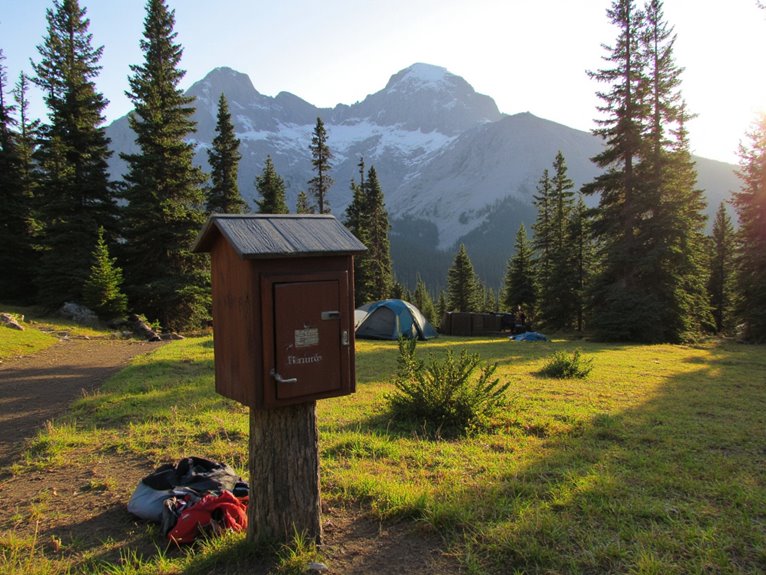Are Military Mres Freeze Dried?
Military MREs, or Meals, Ready-to-Eat, do not contain freeze-dried ingredients, contrary to a common misconception. The preservation methods used in MREs involve a combination of techniques, including controlling moisture levels, specialized packaging, and retorting, a process that heats food to a high temperature to sterilize it. Dehydration technology also plays a key role in removing water content, inhibiting bacterial growth. Understanding the science behind MRE preservation is essential to appreciating their quality and reliability. There's more to uncover about the innovative methods that make MREs a staple for military personnel and outdoor enthusiasts.
We are supported by our audience. When you purchase through links on our site, we may earn an affiliate commission, at no extra cost for you. Learn more. Last update on 24th December 2025 / Images from Amazon Product Advertising API.
The Myth of Freeze-Dried MREs
The Myth of Freeze-Dried MREs
One common misconception about Military MREs (Meals, Ready-to-Eat) is that they contain freeze-dried ingredients, a notion that has been perpetuated by popular culture and misinformed sources.
This myth likely stems from the fact that some commercial backpacking meals do use freeze-drying to preserve ingredients.
However, Military MREs have never utilized freeze-drying as a preservation method.
In reality, MREs rely on a combination of techniques to ensure their shelf life, which can range from three to five years or more depending on storage conditions.
Understanding the actual preservation methods used in MREs is crucial to dispelling this myth and appreciating the science behind these convenient, ready-to-eat meals.
How MREs Are Really Preserved
Military MREs employ a multi-faceted approach to preservation that involves a combination of techniques to guarantee a long shelf life and maintain a high level of quality.
This approach includes controlling moisture levels, using specialized packaging, and applying precise temperature controls during manufacturing.
Additionally, MREs are sterilized through a process called retorting, which involves heating the food to a high temperature to kill off bacteria and extend its shelf life.
This thorough approach guarantees that MREs remain safe to eat for an extended period, even in extreme environmental conditions.
The Role of Dehydration Technology
By leveraging dehydration technology, military MRE manufacturers can substantially reduce the water content of food, thereby inhibiting the growth of bacteria and other microorganisms that cause spoilage.
This process involves removing the water content from food, making it difficult for microorganisms to survive and multiply.
Dehydration technology helps to extend the shelf life of MREs, allowing them to remain safe for consumption even in extreme environmental conditions.
By controlling the water activity level, manufacturers can prevent the growth of pathogens, ensuring that the food remains safe and nutritious for an extended period.
This technology plays a vital role in preserving MREs, making them a reliable option for military personnel and outdoor enthusiasts alike.
Retort Packaging Explained
In the context of preserving food for military personnel, retort packaging plays a vital role.
This innovative technology enables the creation of lightweight, compact, and shelf-stable meals that can withstand extreme temperatures and environmental conditions.
Retort Packaging Process
A critical step in preparing MREs for military personnel is the retort packaging process, which involves sealing the food in a flexible pouch and then subjecting it to high temperatures to kill off any bacteria and extend shelf life.
This process guarantees that the food remains safe to eat for an extended period.
The retort process involves placing the sealed pouches in a large pressure cooker-like device called a retort, where they are subjected to high temperatures (usually around 212°F) for a set period.
This process can take anywhere from 15 minutes to several hours, depending on the type of food and the desired level of sterilization.
Through this process, MREs can remain edible for up to three years or more, thereby safeguarding their quality and longevity.
Packaging Materials Used
The pouches used in retort packaging are typically made from a multi-layer laminate material that combines the strength of polyester or nylon with the barrier properties of aluminum or silica, ensuring that the food remains fresh and protected from external factors.
This unique combination of materials provides an impermeable barrier to oxygen, moisture, and light, thereby preventing spoilage and maintaining the nutritional value of the food.
The laminate structure also allows for flexibility and durability, making it suitable for the rigors of military operations.
The packaging material is also designed to withstand the high temperatures and pressures of the retort process, ensuring that the food is sterilized and ready for consumption.
Shelf Life and Storage Conditions
In maintaining the quality and safety of Military MREs, proper storage conditions play a critical role.
The shelf life of these meals is substantially impacted by factors such as storage temperature control, humidity and moisture levels, and the integrity of packaging and sealing.
Storage Temperature Control
Environmental factors significantly influence the shelf life of MREs, and proper storage conditions are necessary to maintain their nutritional value and safety.
Temperature control is a critical aspect of MRE storage. Extreme temperatures can profoundly impact the shelf life and quality of MREs.
Store MREs in a cool, dry place, away from direct sunlight and heat sources.
Ideal storage temperatures range from 50°F to 70°F (10°C to 21°C).
Avoid storing MREs in areas with temperatures above 80°F (27°C) or below 32°F (0°C).
Fluctuations in temperature can cause degradation of the food, so consistency is key.
Humidity and Moisture Levels
In addition to temperature control, humidity and moisture levels also play a significant role in maintaining the shelf life and quality of MREs.
High humidity and moisture can lead to the growth of mold, yeast, and bacteria, which can compromise the integrity of the food.
Ideally, MREs should be stored in a dry environment with a relative humidity of 60% or less.
This helps to prevent moisture from seeping into the packaging and affecting the food's texture, flavor, and nutritional value.
Packaging and Sealing
The packaging and sealing of MREs play a crucial role in maintaining their shelf life and overall quality, as they serve as a barrier against external factors that can affect the food's texture, flavor, and nutritional value.
The unique packaging system used in MREs guarantees that the food remains fresh and edible for a longer period.
Some key aspects of MRE packaging and sealing:
Pouches are made of a flexible material that can withstand extreme temperatures and conditions.
The triple-layered pouches consist of an outer layer of nylon, a middle layer of aluminum, and an inner layer of polyethylene.
The pouches are sealed using a high-temperature process to remove any air and prevent moisture from entering.
The packaging is designed to be flexible, allowing it to be easily carried and stored in various environments.
The Future of MRE Preservation
As the military continues to seek innovative solutions to extend the shelf life of Meals, Ready-to-Eat (MREs), researchers are exploring novel preservation methods to guarantee the safety and quality of these critical rations.
One promising area of research is advanced packaging technologies, such as nanocomposite films and bio-based materials, which can improve barrier properties and prevent moisture and oxygen from spoiling the food.
Another area of focus is the use of natural antimicrobials and antioxidants to inhibit microbial growth and oxidation reactions.
These emerging technologies have the potential to transform MRE preservation, enabling longer shelf life, improved nutritional content, and enhanced food safety for warfighters in the field.




